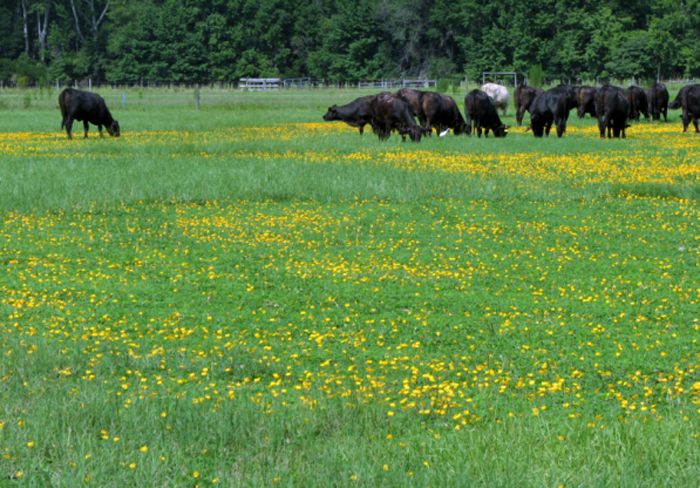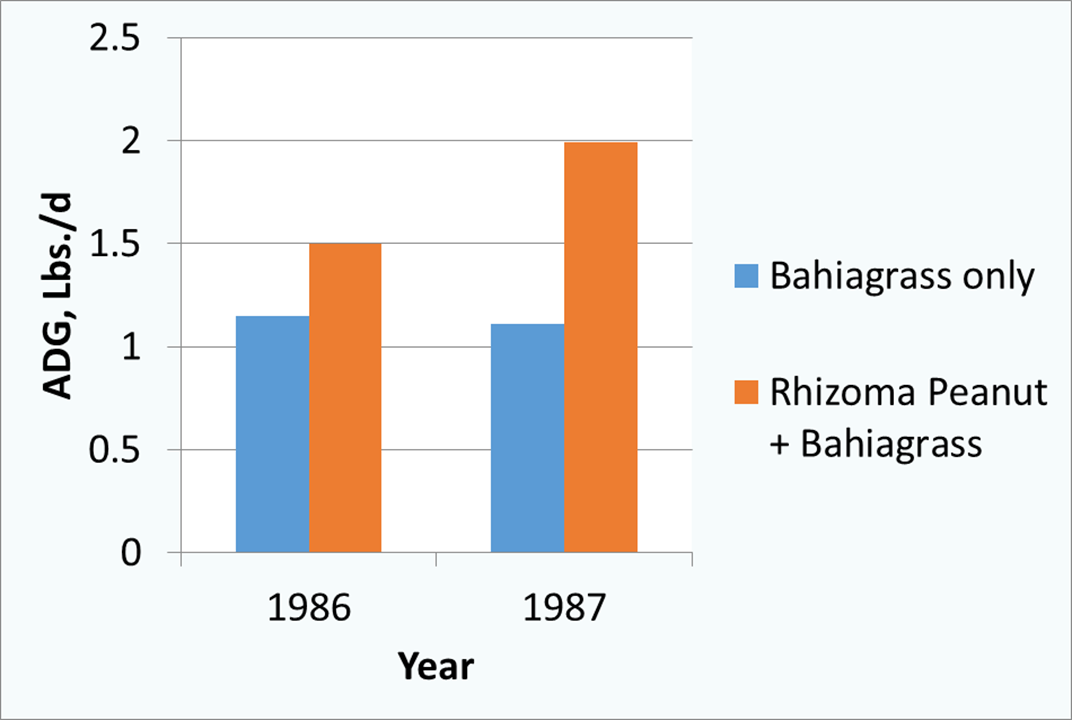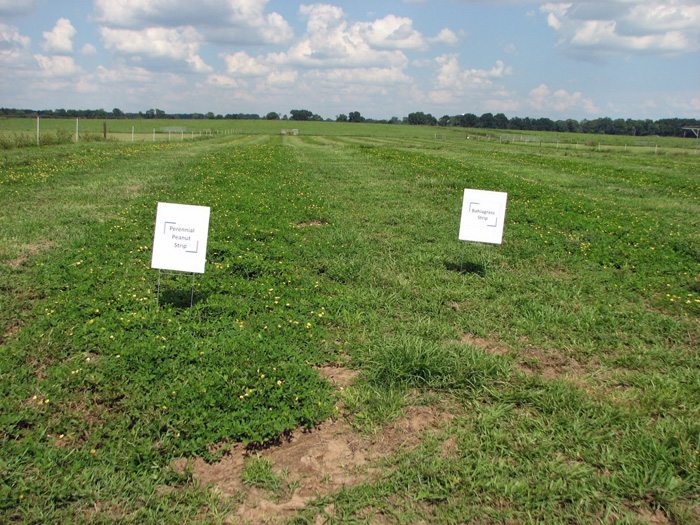
Figure 3. Rhizoma peanut + bahiagrass pastures 10 years after establishment.
Rhizoma peanut (commonly known as perennial peanut) is a warm-season perennial legume well adapted to Florida. It has high digestibility (65-75%) and crude protein concentrations (15-20%), that can really boost livestock performance. Integrating rhizoma peanut into bahiagrass pastures can almost double livestock performance, compared to bahiagrass alone (Figure 1). Rhizoma peanut also associates with soil microorganisms and adds nitrogen to the system, reducing costs with Nitrogen (N) fertilizer. As its name suggests, this legume has a significant rhizome mass which provides tolerance to grazing and cold temperatures, overwintering well in North Florida.

Figure 1. Average daily gain (ADG) of cattle grazing bahiagrass or bahiagrass/rhizoma peanut pastures
Unfortunately, rhizoma peanut can only be propagated by planting or sprigging rhizomes. Because of all the operations involved in the planting process, establishment of this legume is expensive ($400-500/acre). Researchers are investigating a way to reduce the cost by using a strip-planting technique (Figure 2). The idea is to establish the peanut over 30-50% of the area, reducing the cost accordingly. A blend of 30% rhizoma peanut in perennial grass pastures provides benefits in terms of livestock performance and biological N2-fixation. Because rhizoma peanut establishment is slow, grass strips could be used to produce hay during the establishment period. Thus, strip width should match planting and harvesting equipment width. Likewise, rhizoma peanut strips should match the width of commercially available spriggers, which range from 8-9 ft. wide.

Figure 2. Strip-planting of rhizoma peanut (Arachis glabrata Benth.) into Argentine bahiagrass (Paspalum notatum Flugge); Marianna, FL. Photo credits: Jose Dubeux, UF/IFAS – NFREC
During the establishment year, it is critical to keep the weeds out of the legume strip. Keeping the bahiagrass and rhizoma peanut in different strips during the establishment year allows the application of herbicides on the legume strip without damaging the bahiagrass stand. Herbicides labeld for use on rhizoma peanut are described in Weed Control in Perennial Peanut.
It is also important to properly fertilize the rhizoma peanut strip during establishment. In the first years, the peanut is building up its rhizome mass, which represents the greatest proportion of biomass of this legume. Application of P, K, S, micronutrients, and N during the establishment phase will help to improve rhizoma peanut establishment. Care must be taken during the establishment year. Research results indicate that rhizoma peanut should not be grazed during the first two seasons, when it is still building its rhizome mass. Recent estimates of biological N2-fixation showed that rhizoma peanut varieties fixed between 110-190 lbs N/acre annually, depending on the variety. If we assume an average annual fixation of 150 lbs N/acre, this would represent an annual savings in $120 per acre in N fertilizer. If using the strip-planting approach and 50% of the land is planted, the contribution would still be significant ($60/acre). It is important to mention that rhizoma peanut spreads into the grass strips and in the long-term, the grass-legume mixture will occupy the entire area (Figure 3 above).